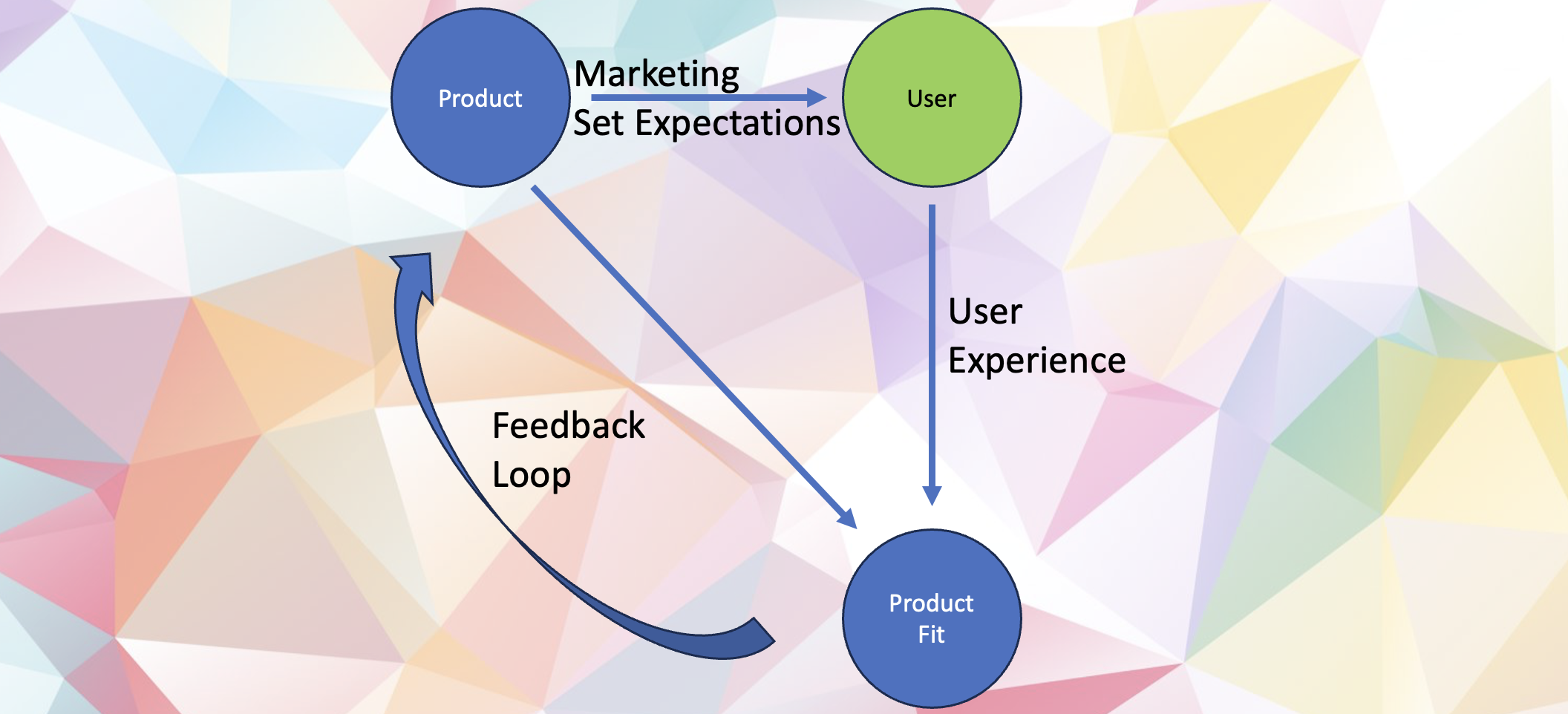Essential KPIs for optimal SaaS business
Key Performance Indicators (KPIs) are important to business...

The interdependency between product development and marketing strategies becomes a crucial determinant of success. It is not about what comes first, the product or the marketing. Both intertwine and influence each other at the same time. It is critical to listen to users and adapt your own product development and marketing strategy to get closer to product market fit (PMF). If we look at a product in its current state, we can’t determine its final state when it will achieve PMF without knowing how the marketing efforts will influence it. Since it’s impossible to know market perception of a product in advance, any company must adapt fast to ever-changing users’ expectations and needs.
We would call it “Product-Marketing Morphism” as it underscores the symbiotic relationship between product evolution and effective marketing efforts. The significance of how marketing influences product development, particularly in the context of Product-Led Growth (PLG) strategy, must be explained.
The Initial Struggle
Sales-Led Efforts and Chasm Crossing At the beginning of many ground-breaking products we often find founders taking a sales-led approach to secure initial customers and references to obtain initial traction on the market. The phase of “chasms crossing” coined by Geoffrey A. Moore further exemplifies the importance of direct sales involvement.
The strategic pivot from Sales-Led to Product-Led growth is often seen when a product is used by more and more users beyond the early adopters. It effectively sets the stage for sustained growth, supported by wider product adoption on the market.
Word-of-Mouth and Intuitive Interface
While the eventual goal of a product might be seamless user adoption and viral expansion, these factors hardly happen by accident. The role of marketing is to position a product to potential users that sets their expectations at the point when they can be satisfied by the product at its current development stage. An intuitive interface and word-of-mouth recommendations tend to flourish only after the product has amassed valuable feedback from its initial user base. This feedback refines the product functionality, marketing messaging, and positioning, creating an environment supporting organic growth. All these changes must be orchestrated.
If an organization wants to meet PMF sooner, its feedback-loop between Product and Marketing need to be short enough to be iterated many times faster.
Navigating the “Thinking Inertia” Barrier
For products that introduce innovative solutions, the challenge lies in overcoming the “thinking inertia” of potential users. Innovative products often require users to experience product multiple times at different perspectives to be understood fully. A mere company message might not suffice to communicate the transformative value of the product. This is where effective marketing steps in, translating complex innovation into relatable terms that resonate with the target audience. With time such innovation can be simplified further to the point of user’s experiences “wow” moment when they get that innovation intuitively without much explanation.
Feedback-Driven Positioning and Communication
As the product gains traction and is embraced by an increasing number of users, their feedback becomes invaluable. This input serves not only to enhance the product itself but also shapes its positioning and communication strategy. This iterative process involves capturing, analyzing, and testing various messaging approaches, ensuring that the product’s value proposition is effectively conveyed to the market. With the right positioning for the ideal customer profiles, they start to demand relevant functionality to better solve their problem that the product is supposed to fix. This enhances prioritization of product development with the right features for the right audience.
It is OK to serve customers in adjacent segments with not so ideal fit of profiles, however the product decisions should be made based on the most desired segment only or the product positioning and value will be diluted making it much harder to sell to more customers in the future. The loss of clarity on ideal customer profile and inability to answer a question “who is our customer” make products to fail.
The ongoing interplay between product development and marketing functions is very delicate at the intersection of innovation and audience engagement. This synergy acts as a catalyst in propelling a product’s journey toward achieving Product-Market Fit, the elusive state where a product resonates seamlessly with its target market.
Conclusion
The interdependence of product innovation and marketing cannot be overstated. The concept of Product-Marketing Morphism encapsulates this intricate relationship between facets and highlights how marketing plays a pivotal role in driving product growth. Product Managers should better operate with marketing strategies and manage the desired feedback loop from the right customers. All products are not static and continuous evolution of product development and positioning are critical. The journey from initial idea, product testing and sales efforts to widespread user adoption, catalyzed by effective messaging and user feedback, is what increase product’s chances for success.
Written by